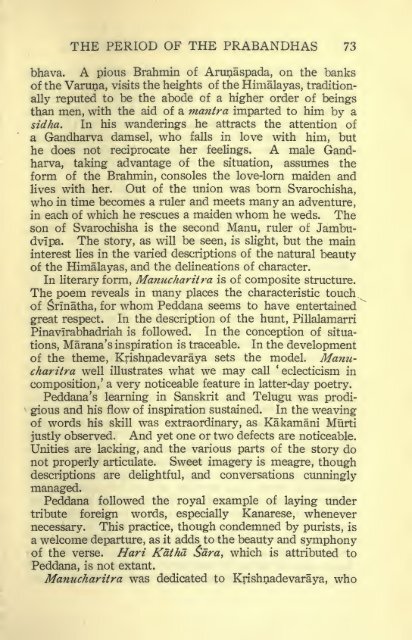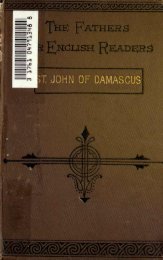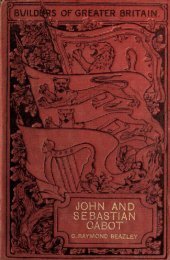A history of Telugu literature; - Cristo Raul
A history of Telugu literature; - Cristo Raul
A history of Telugu literature; - Cristo Raul
Create successful ePaper yourself
Turn your PDF publications into a flip-book with our unique Google optimized e-Paper software.
hava. A pious Brahmin <strong>of</strong> Arunaspada, on the banks<br />
<strong>of</strong> the Varuna, visits the heights <strong>of</strong> the Himalayas, tradition-<br />
ally reputed to be the abode <strong>of</strong> a higher order <strong>of</strong> beings<br />
than men, with the aid <strong>of</strong> a mantra imparted to him by a<br />
sidha. In his wanderings he attracts the attention <strong>of</strong><br />
a Gandharva damsel, who falls in love with him, but<br />
he does not reciprocate her feelings. A male Gandharva,<br />
taking advantage <strong>of</strong> the situation, assumes the<br />
form <strong>of</strong> the Brahmin, consoles the love-lorn maiden and<br />
lives with her. Out <strong>of</strong> the union was born Svarochisha,<br />
who in time becomes a ruler and meets many an adventure,<br />
in each <strong>of</strong> which he rescues a maiden whom he weds. The<br />
son <strong>of</strong> Svarochisha is the second Manu, ruler <strong>of</strong> Jambudvipa.<br />
The story, as will be seen, is slight, but the main<br />
interest lies in the varied descriptions <strong>of</strong> the natural beauty<br />
<strong>of</strong> the Himalayas, and the delineations <strong>of</strong> character.<br />
In literary form, Manucharitra is <strong>of</strong> composite structure.<br />
The poem reveals in many places the characteristic touch<br />
<strong>of</strong> Srinatha, for whom Peddana seems to have entertained<br />
great respect. In the description <strong>of</strong> the hunt, Pillalamarri<br />
Pinavirabhadriah is followed. In the conception <strong>of</strong> situations,<br />
Marana's inspiration is traceable. In the development<br />
<strong>of</strong> the theme, Krishnadevaraya sets the model. Manucharitra<br />
well illustrates what we may call 'eclecticism in<br />
composition,' a very noticeable feature in latter-day poetry.<br />
Peddana 's learning in Sanskrit and <strong>Telugu</strong> was prodi-<br />
gious and his flow <strong>of</strong> inspiration sustained. In the weaving<br />
<strong>of</strong> words his skill was extraordinary, as Kakamani Murti<br />
justly observed. And yet one or two defects are noticeable.<br />
Unities are lacking, and the various parts <strong>of</strong> the story do<br />
not properly articulate. Sweet imagery is meagre, though<br />
descriptions<br />
managed.<br />
are delightful, and conversations cunningly<br />
Peddana followed the royal example <strong>of</strong> laying under<br />
tribute foreign words, especially Kanarese, whenever<br />
necessary. This practice, though condemned by purists, is<br />
a welcome departure, as it adds to the beauty and symphony<br />
<strong>of</strong> the verse. Hari Kathd Sara, which is attributed to<br />
Peddana, is not extant.<br />
Manucharitra was dedicated to Krishnadevaraya, who

















